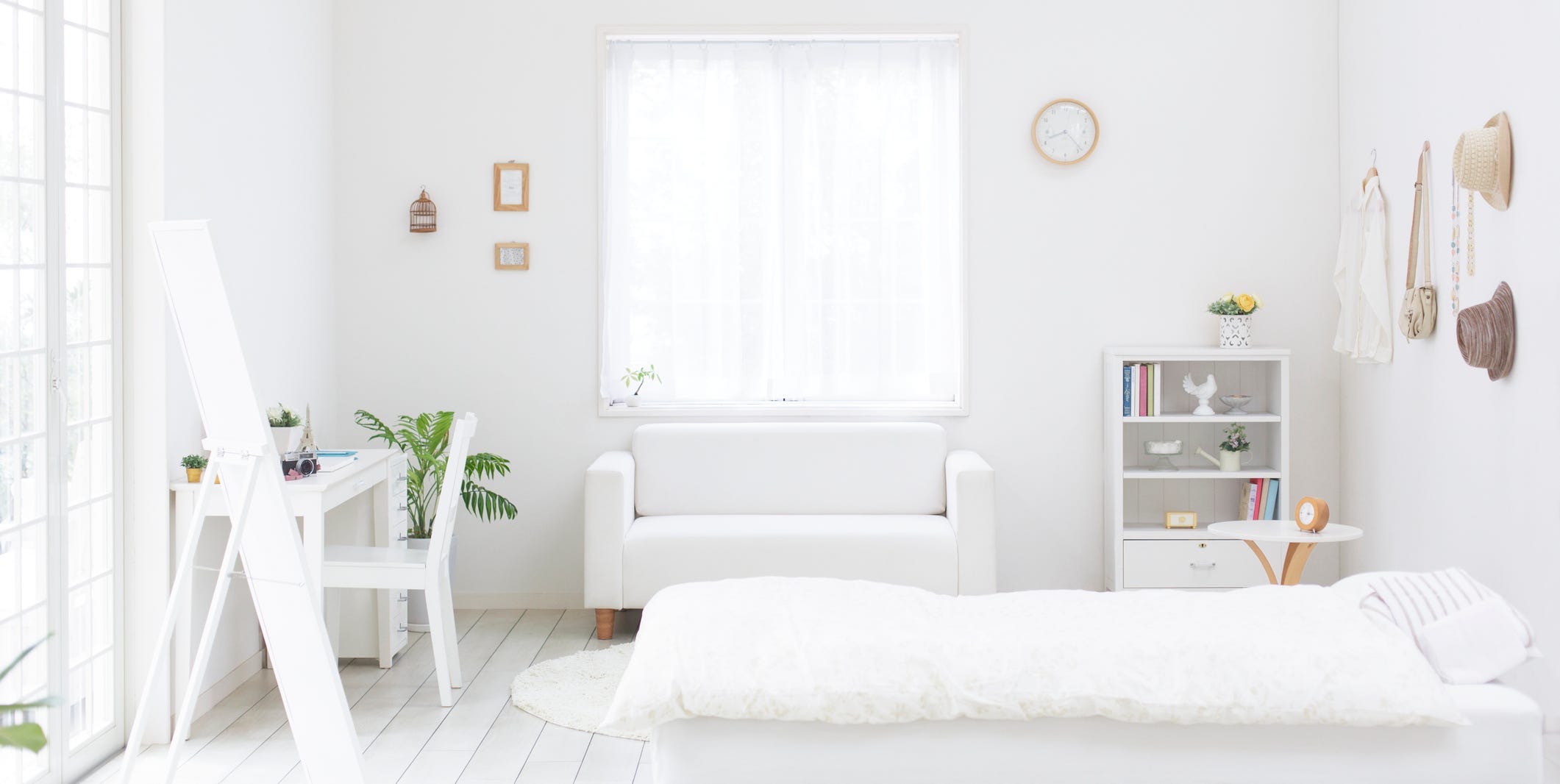While rents go up, landlords see a good opportunity for investments. Paying cash is just the way to speed up the entire process of re-gaining their investment.
Antiques for a Higher Value of the House

Photo source: Elle Decorations UK http://bit.ly/2iPriZq
Raising the value of the house can be done in many ways. You can start re-shaping it, creating more useful space, refurbishing, changing the design, and maybe even adding some technological improvements (smarthomes).
A clean-cut way to add value inside the home is choosing valuable antiques. Special decorating objects that blend in the design, old elements from an old house that can be reused and kept for their high value, furniture from antique shops…
It will give you some headaches when it comes to the general design of the house, but with a very critical eye and some rightfully chosen antiques, your house is going to be… precious!
Mortgages on the Rise. At Least for Lenders.
According to a recent report, the UK has seen growth in the number of mortgages for non-standard borrowers, such as for buy-to-let landlords and lifetime mortgages. Since 2009, there has been a 19% increase each year to the value of the mortgage lending companies annual lending. These companies have seen their lending amounts increase to £17 billion per year in 2016, a significant increase on the £5 billion that was recorded in 2009.
The specialist lenders are said to be in a very strong position despite the previous ever changing nature of the market, and that they are capturing the ongoing growth in the number of the UK’s non-standard borrowers that mainstream lenders may not look to work with.
London House Price to Raise Spectacularly
Ever wondered if you bought your house at the right price/ at the right time? It seems the answer for both your questions is ‘Yes!’.
At least for London, the forecasts are quite grey predicting a 10% raise in the average house price. And the raise is not necessarily based on value growth…
Common Mistakes Made When Trying to Sell Your Property

Photo source: http://bit.ly/2zsBj8V
Moving home is often cited as one of the most stressful experiences in life. However, you can make the process a little less stressful by following advice and avoiding common mistakes.
- Picking the Wrong Agent
Not all estate agents are the same. Check out their fees and whether there are hidden costs and what their success rate is. Many people simply settle on the first company they come across and end up regretting it. As with any venture, it pays to shop around and ask the right questions before you enter into any arrangement.
- Overpricing
Another mistake that sellers make is over estimating the price they’ll get for their property. This is more common nowadays where many bypass traditional estate agents and simply pick a selling price out of thin air. Do your research and see what similar properties in your area are going for and set a reasonable price.
- Using poor quality photos
These days, the majority of homes sold in the UK are placed in online listings. Don’t accept poor quality images. If you’ve chosen a good estate agent, they will make sure your property is looking its very best through high quality photographs. These are the first thing a buyer will see and you only get one chance to make a good first impression. Therefore, it is essential that your agent is using photographs that will really appeal to potential buyers.
- Not fixing things that are broken
There are plenty of houses for sale – and you want to make sure buyers won’t discount yours. They will, though, if things are broken when they come for a viewing. You may well be planning on fixing whatever’s broken before you move, but your buyer doesn’t know that. Get it fixed before you put your property on the market
- The Exterior
You’ve probably spent a long time making sure the inside of your house is not only clean and tidy, but also well decorated, perfectly laid out and just generally ideal for showing off to that buyer who’s coming around. But don’t forget, as much as the inside of the house will dazzle them, the exterior gives it that kerb appeal, and can help them form an opinion before they’ve even come inside. The garden sells your home, even subconsciously, so as much as you want to get the inside of your home perfect, forgetting the garden is a big no-no. It’s all too easy to miss things like tired old fences, lawns that are slightly too long or items strewn about the garden, but these are all things that give your home a negative kerb appeal, and it’s absolutely essential that they’re addressed before the home comes to market.
- Keeping personal touches around the home
When potential buyer’s come to view the house, they need to be able to picture themselves living there. If you have personal touches lying around such as photos and your own personal colour scheme, it makes it more difficult for buyers to imagine it as their own. Therefore, you need to ensure you are offering a neutral ‘blank canvas’. This means painting the walls a neutral colour and taking down any personal touches that distinguish it as your home.
Lastly, don’t hide anything from your agent. Make sure you are upfront about any issues there are with your home. This will save you lots of time and money as they will come out eventually, potentially ruining your sale too.
Best In-Door Plants to Destress Your Home
Some well-placed greenery can not only brighten a space but also purify the air – and they’re also helpful in creating a more relaxing, restful ambiance in any room. We know that spending time in nature is linked to reduced stress levels and tension relief. What’s more, in a 2008 study, Dutch researchers found that hospital patients with indoor plants in their rooms reported lower stress levels than patients without them.



- Aloe Vera Plant
The gel of the Aloe plant has several healing properties. Not only does it soothe skin burns and cuts, it can also help monitor the air quality in your home. The plant can help clear the air of pollutants found in chemical cleaning products, and when the amount of harmful chemicals in the air becomes excessive, the plants’ leaves will display brown spots. Aloe Vera Plant grows best with lots of sun.
- English Ivy Plant (Hedera Helix)
NASA Scientists listed the English Ivy as the number one best air-filtering houseplant, as it is the most effective plant when it comes to absorbing Formaldehyde. It’s also incredibly easy to grow and adaptable. Try it as a hanging or floor plant, grow in moderate temperature and medium sunlight.
- Peace Lily Plant
The beautiful Peace Lily plant is a wonderful low-maintenance flower to keep in the home. Peace Lilies do well in shade and cooler temperatures, and they can reduce the levels of a number of toxins in the air.
- Chrysanthemum
The bright flowering plant battles a whole host of chemical including Xylene, Formaldehyde, toluene and Benzene. Keep it in the Lounge (In bright sunlight) so it’s anti-polluting superpowers can be best put to use.
- Snake Plant (Sansevieria)
Snake Plants don’t need much light or water to survive, so they’re an easy choice for any corner of your home. The plant absorbs Carbon Dioxide and releases Oxygen during the night, so place one in your bedroom and you’ll breathe better while you sleep. It has also been proven to be extremely effective in treating headaches, eye irritation, and respiratory problems.
- Golden Pothos
The Golden Pothos makes the NASA list as well for its ability to clear Formaldehyde from the air. Try adding it to your Kitchen or Lounge as a hanging plant, as the leaves will grow down in cascading vines. They grow easily in cool temperatures with low levels of sunlight. Please be aware that it is considered poisonous and therefore should be kept away from small children and pets.
7.Calathea (Peacock Plants)
Peacock Plants are grown for their foliage alone and it’s easy to see why. The purple, green, pink and red leaves put on quite a show. For the best display, keep the plant moist (Not drenched) and avoid bright light.
- Jasmine
As part of the Olive family it normally grows outside, but can live inside just as well. This plant should be more specially placed in the bedroom as it promotes sleep quality by emitting scents that have shown to make for better sleep, as well as increase your levels of alertness.
Homeownership – a Dream Not Coming True?

Photo source: Pixabay http://bit.ly/2iDa0yK
48% of tenants in Europe, although they desire their own home, think they will not be able to have it. The percent raises to 56% in the UK…
What is really interesting about the study is also knowing in which European country is more wise to rent a home instead of buying it…
How to Choose a Place to Live
Photo source: Wikimedia Commons – Aberdeen Neighbourhood http://bit.ly/2hLjBns
Are you wanting to move but finding it hard to decide what area you are looking to move to? One thing you need to remember is could you live in a quiet town out in the sticks or in the busy centre of a city.
It not an easy decision to make. It may be your dream to live out in the country side, in the fresh air and enjoying the slow pace of life but you may end up finding it too slow or too much of a distance for getting from A to B with the long country roads. But then again, your dream may come true exactly as wished and it turns out to be the best decision you ever made.
There are a number of things to take into consideration when moving to a different part of a town. It can take time to get to know the area well enough to know whether you would like to live there, and many issues will not apparent from just visiting.
At first you will need to choose an area that you can afford to live in, the sort of property you want to live in. City Centres tend to be more expensive than the countryside, the South tends to be more expensive than the North and London is obviously much more expensive than pretty much anywhere else.
You will also need to decide what type of property you want, whether it is a new build, house, flat or a bungalow. Also, what is the minimum number of bedrooms you would consider, do you want your own front door, or are you happy with a conversion flat.
There is also employment to think about. If you are moving from the city to the countryside, consider that you may want to adapt your work-life balance or spend more time with your kids, all of which might require employment opportunities closer to home. Ensure you leave room for career flexibility. Don’t move to a one-industry town if you are about to leave the industry. Ambitious people may require access to larger centres of employment and job markets.
Spend days wandering the area you are interested in. You will probably spend years there – it is worth investing time to make sure you are happy where you end up.
Visit the parks, the pubs and shops, see if you can you feel yourself living there. Even if you rent at the beginning, it is better to rent somewhere in a village and find you can’t stand village life, than buying and selling in distress a couple of years later.
Once you have chosen a rough area, drill down – life can vary dramatically street-by-street, or village by village. Chat with the estate agents – they usually have good insider information about the local variations.
If you do choose to move to the city, one side of a suburb can be very different from another. Council Tax can be dramatically from one side of the street to the other. Transport link, what may take five minutes from one street to a bus stop my take twenty minutes from another.
Then you will need to make sure you are moving somewhere child-friendly. Good schools are vital. Visit the Ofsted’s website to find out information about the schools in the wanted area. Also, the local councils will generally tell you the precise catchments area of their schools in recent years.
Living where lots of other families already live is a good bet, and will ensure lots of facilities for families.
New Standards for the UK Letting Market?!
The property industry is constantly going through changes. This time we are talking about new standards for the UK lettings market.
We will wait and see what exactly is going to happen, but flexibility is a clear requirement these days.
Ikigai – the New Trending Concept for Interior Design and… Life
Ikigai (生き甲斐, pronounced [ikiɡai]) (ee-kee-guy) is a Japanese concept that means “a reason for being.” It is similar to the French phrase Raison d’être. Everyone, according to Japanese culture, has an ikigai. Finding it requires a deep and often lengthy search of self. Such a search is important to the cultural belief that discovering one’s ikigai brings satisfaction and meaning to life.[1] Examples include work, hobbies and raising children.[2]
 This concept is the new trend when it comes to interior design. Thinking and over-thinking about what is the entire purpose of your home will make you easily pick the concept for the entire design of the house.
This concept is the new trend when it comes to interior design. Thinking and over-thinking about what is the entire purpose of your home will make you easily pick the concept for the entire design of the house.
You will find inspiration for decorating in the Ikigai style in the following article on Elle Decor:
IS IKIGAI THE NEW HYGGE?
This Japanese concept might be the secret to finding longevity and purpose in life.
There are a lot more visual ideas on Pinterest if the flow really got you!